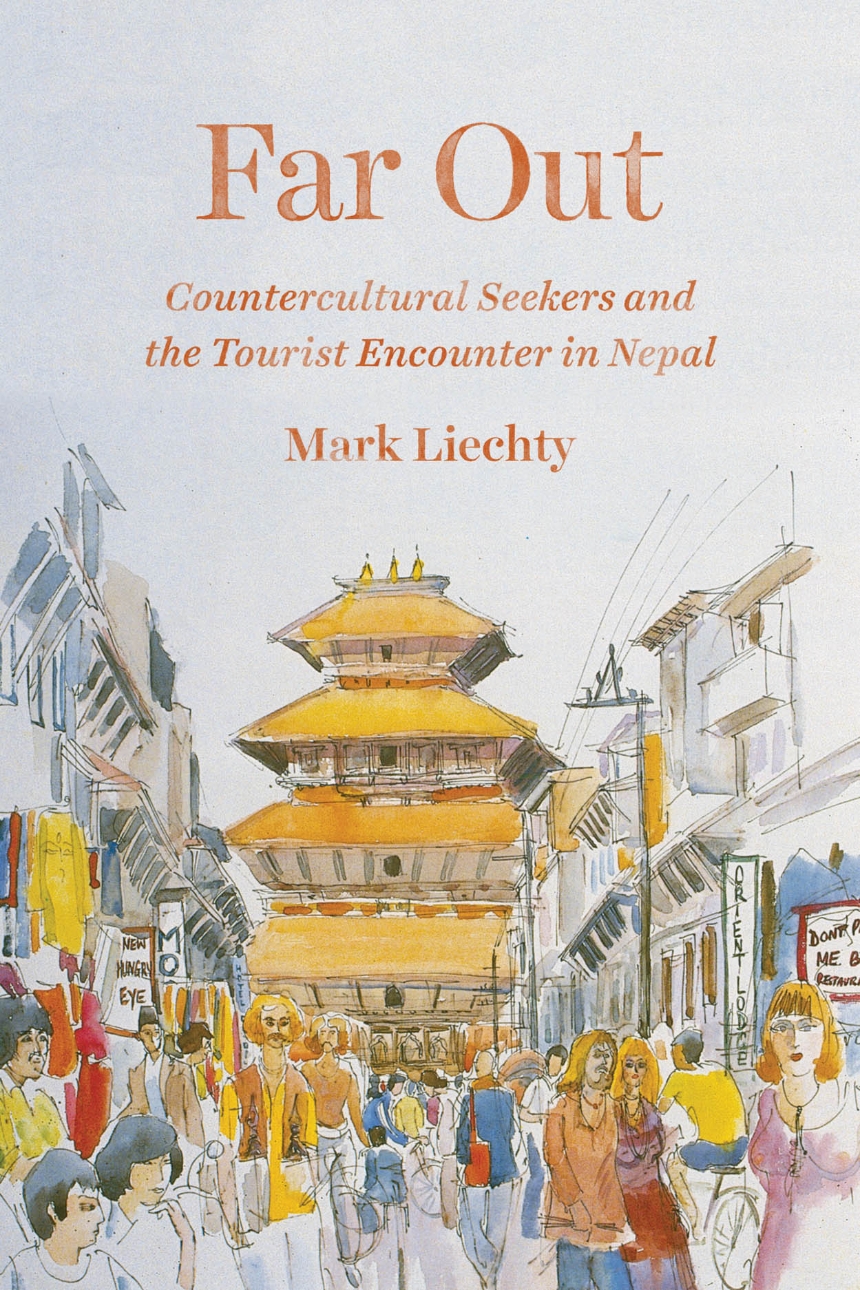Far Out
Countercultural Seekers and the Tourist Encounter in Nepal
9780226428949
9780226428802
9780226429137
Far Out
Countercultural Seekers and the Tourist Encounter in Nepal
Westerners have long imagined the Himalayas as the world’s last untouched place and a repository of redemptive power and wisdom. Beatniks, hippie seekers, spiritual tourists, mountain climbers—diverse groups of people have traveled there over the years, searching for their own personal Shangri-La. In Far Out, Mark Liechty traces the Western fantasies that captured the imagination of tourists in the decades after World War II, asking how the idea of Nepal shaped the everyday cross-cultural interactions that it made possible.
Emerging from centuries of political isolation but eager to engage the world, Nepalis struggled to make sense of the hordes of exotic, enthusiastic foreigners. They quickly embraced the phenomenon, however, and harnessed it to their own ends by building tourists’ fantasies into their national image and crafting Nepal as a premier tourist destination. Liechty describes three distinct phases: the postwar era, when the country provided a Raj-like throwback experience for rich Americans; Nepal’s emergence as an exotic outpost of hippie counterculture in the 1960s; and its rebranding into a hip adventure destination, which began in the 1970s and continues today. He shows how Western projections of Nepal as an isolated place inspired creative enterprises and, paradoxically, allowed locals to participate in the global economy. Based on twenty-five years of research, Far Out blends ethnographic analysis, a lifelong passion for Nepal, and a touch of humor to produce the first comprehensive history of what tourists looked for—and found—on the road to Kathmandu.
Emerging from centuries of political isolation but eager to engage the world, Nepalis struggled to make sense of the hordes of exotic, enthusiastic foreigners. They quickly embraced the phenomenon, however, and harnessed it to their own ends by building tourists’ fantasies into their national image and crafting Nepal as a premier tourist destination. Liechty describes three distinct phases: the postwar era, when the country provided a Raj-like throwback experience for rich Americans; Nepal’s emergence as an exotic outpost of hippie counterculture in the 1960s; and its rebranding into a hip adventure destination, which began in the 1970s and continues today. He shows how Western projections of Nepal as an isolated place inspired creative enterprises and, paradoxically, allowed locals to participate in the global economy. Based on twenty-five years of research, Far Out blends ethnographic analysis, a lifelong passion for Nepal, and a touch of humor to produce the first comprehensive history of what tourists looked for—and found—on the road to Kathmandu.
392 pages | 22 halftones | 6 x 9 | © 2017
Anthropology: Cultural and Social Anthropology
Asian Studies: General Asian Studies
History: Asian History, General History
Reviews
Table of Contents
Preface
Acknowledgments
Acknowledgments
Part One: The Golden Age
Chapter One: Building the Road to Kathmandu: Steps in the West’s Journey to the East
Chapter Two: Making Nepal a Destination: The Cultural Politics of Early Tourism
Chapter Three: Mountains, Monsters, and Monks: Nepal in the 1950s Western Popular Imagination
Chapter Four: The Key to an Oriental World: Boris Lissanevitch, Kathmandu's Royal Hotel, and the “Golden Age” of Tourism in Nepal
Chapter Five: Jung Bahadur Coapsingha: John Coapman, Hunting, and the Origins of Adventure Tourism in Nepal
Part 2: Hippie Nepal
Chapter Six: The Great Rucksack Revolution: Western Youth on the Road to Kathmandu
Chapter Seven: “Kathmandu or Bust”: Countercultural Longing and the Rise of Freak Street
Chapter Eight: “Something Big and Glorious and Magnificently Insane”: Hippie Kathmandu
Chapter Nine: Hippie Ko Pala (The Age of Hippies)
Chapter Ten: Nepal’s Discovery of Tourism and the End of the Hippie Era
Part 3: Adventure Tourism
Chapter Eleven: Adventure Nepal: Trekking, Thamel, and the New Tourism
Chapter Twelve: Imbibing Eastern Wisdom: Nepal as Dharma Destination
References
Index
Index
Awards
Anthropology of Tourism Interest Group: Ed Bruner Book Award
Won
The Himalayan Club: Kekoo Naoroji Award for Mountain Literature
Won
